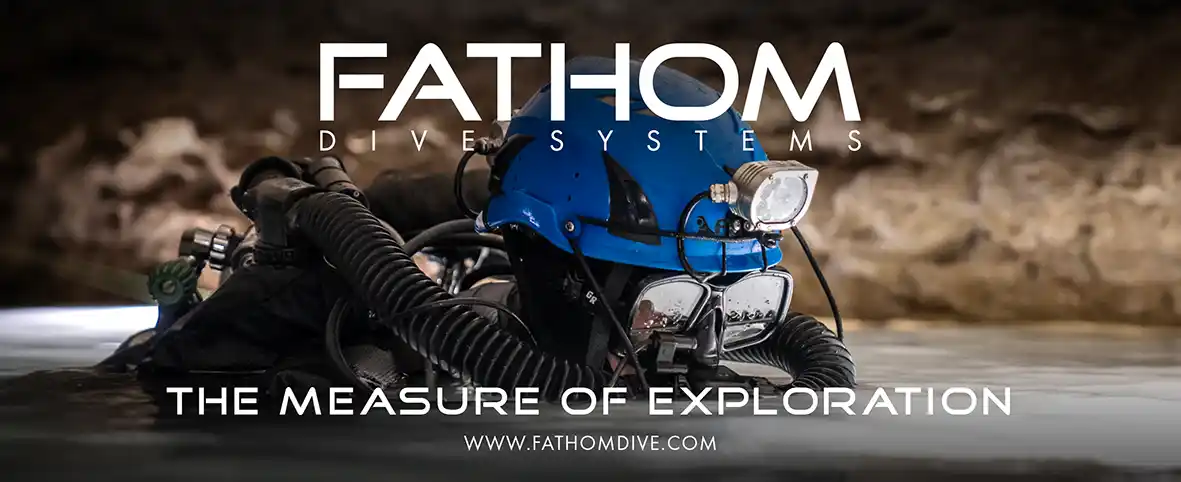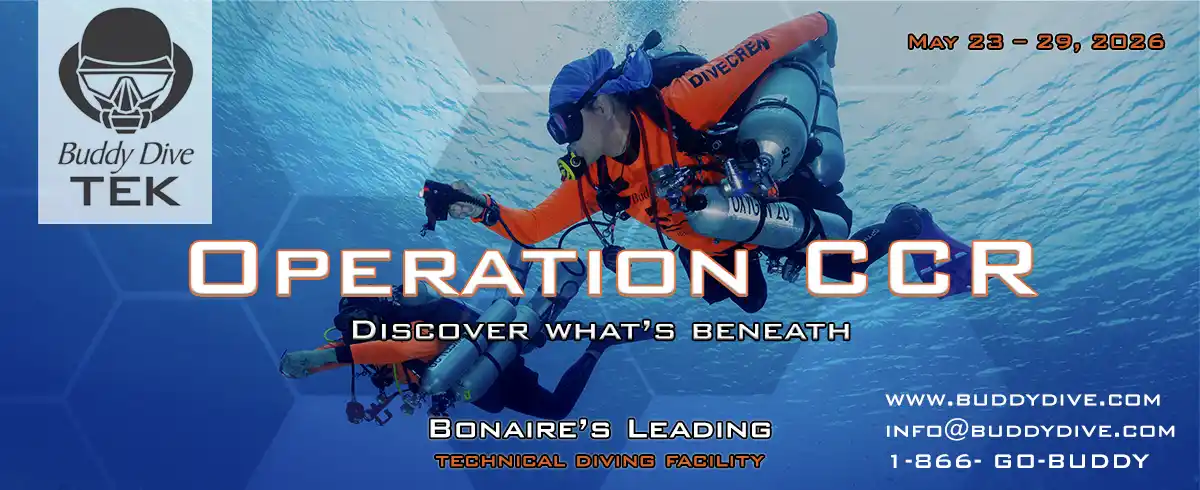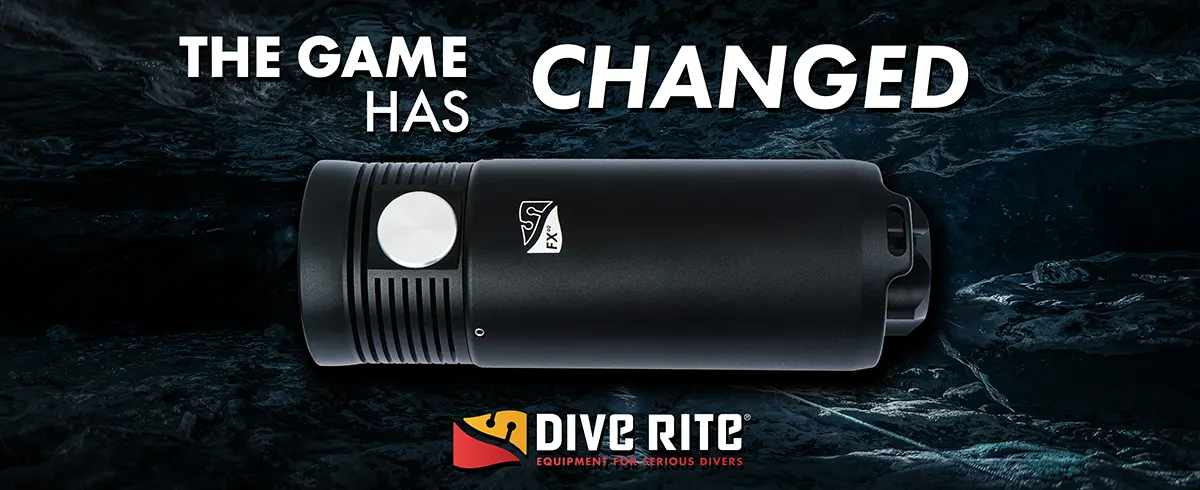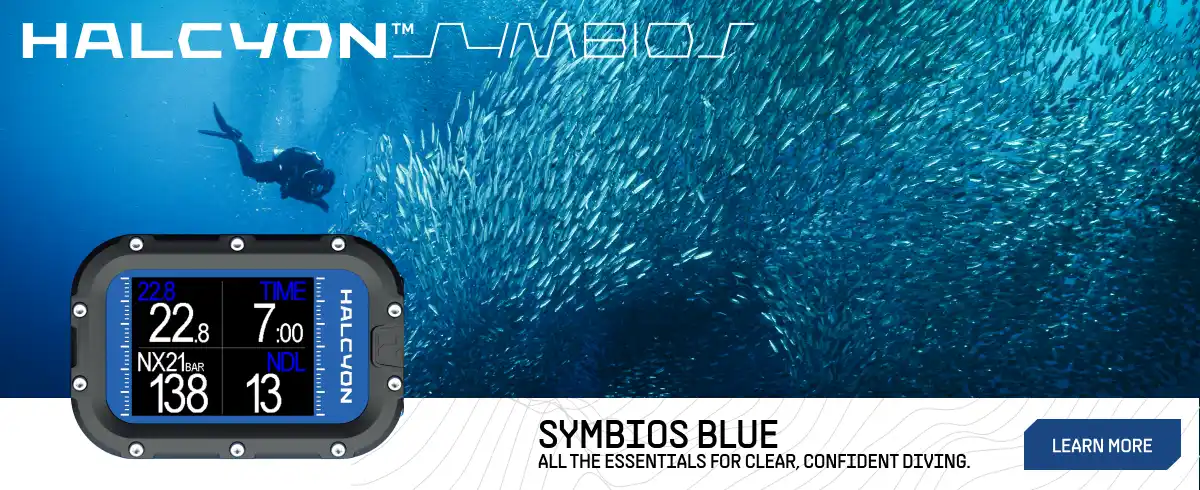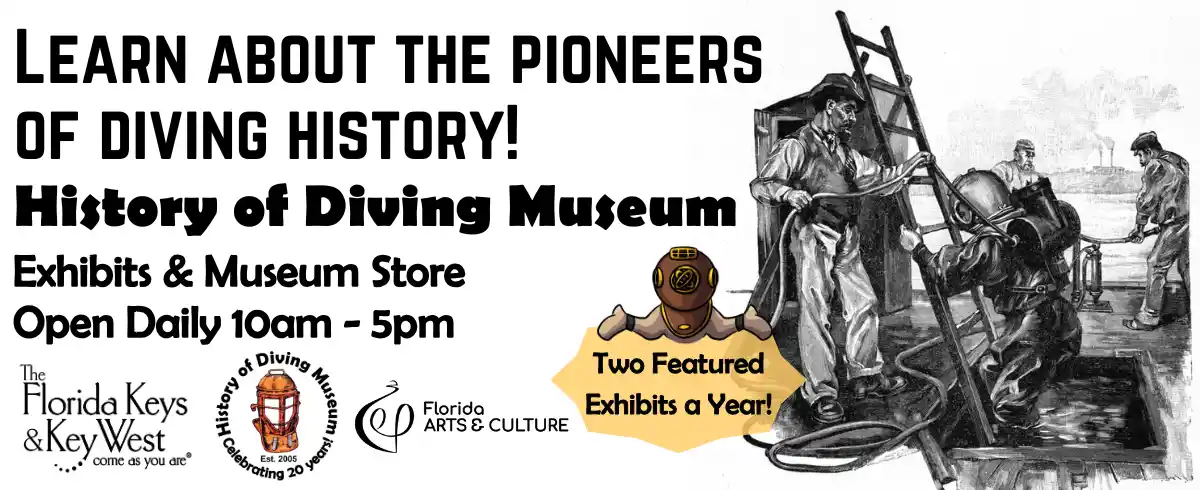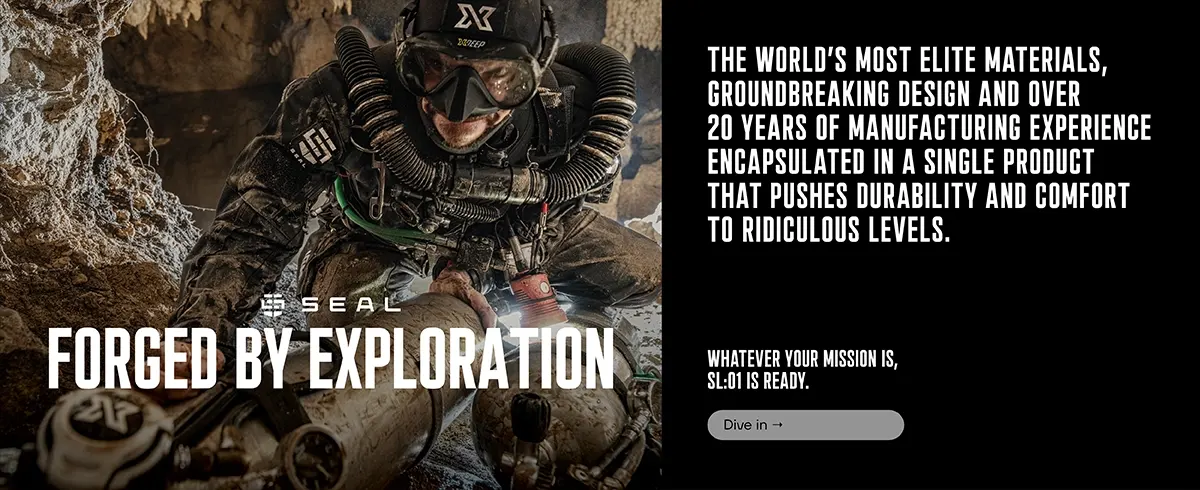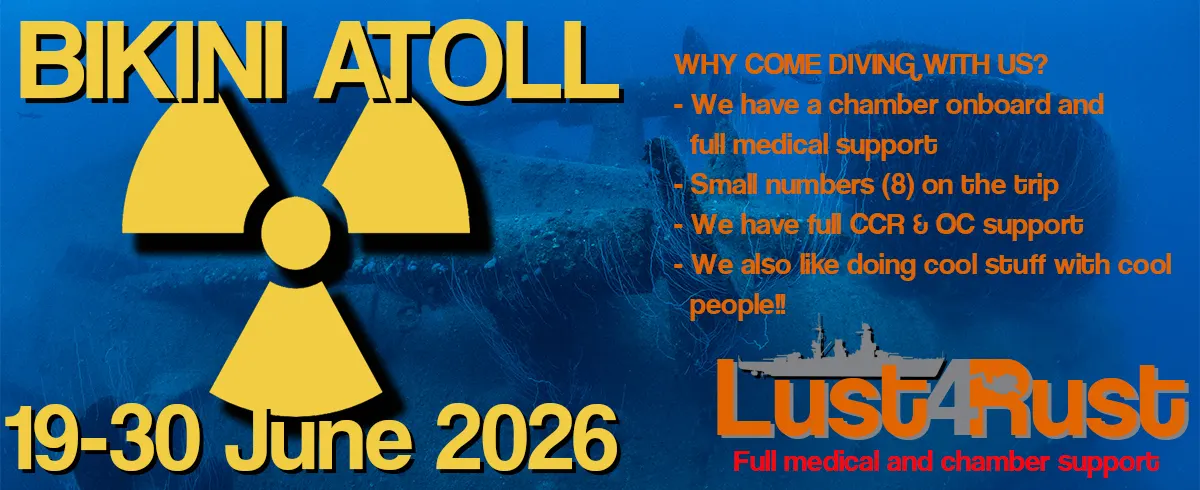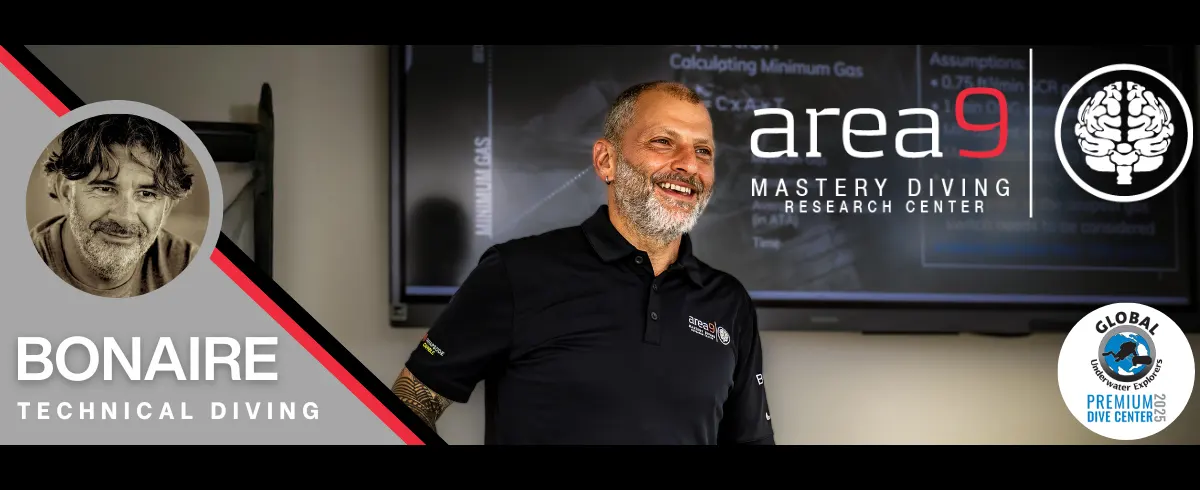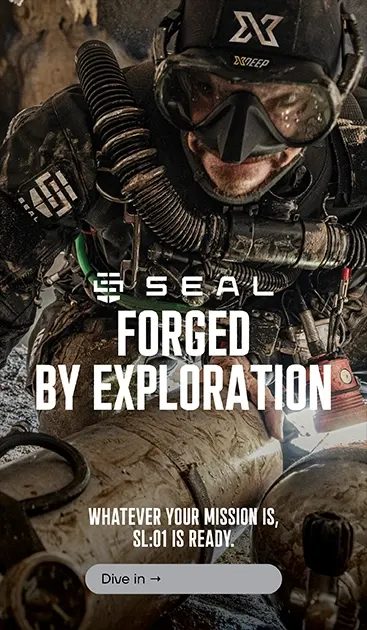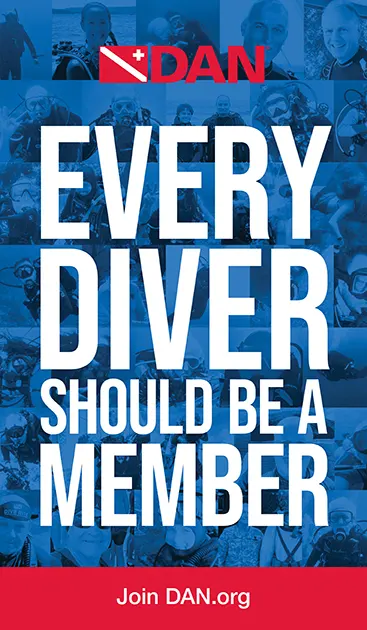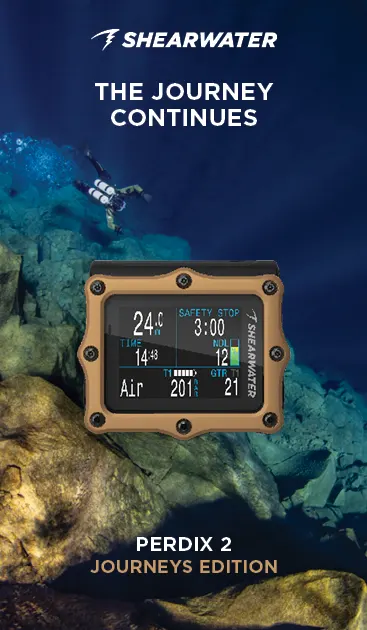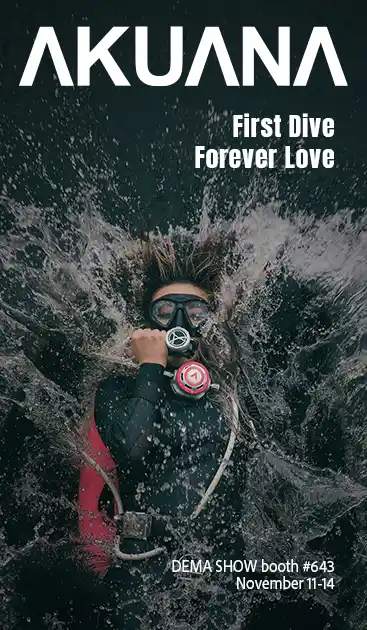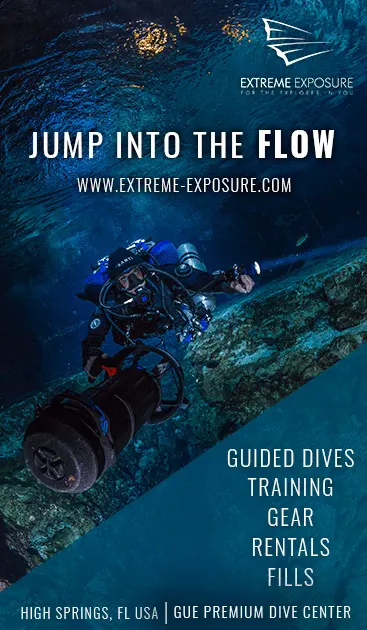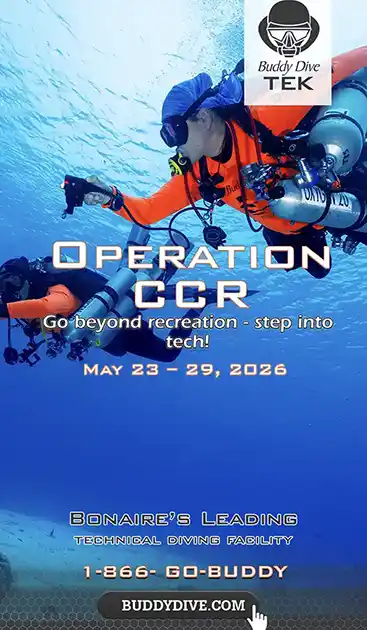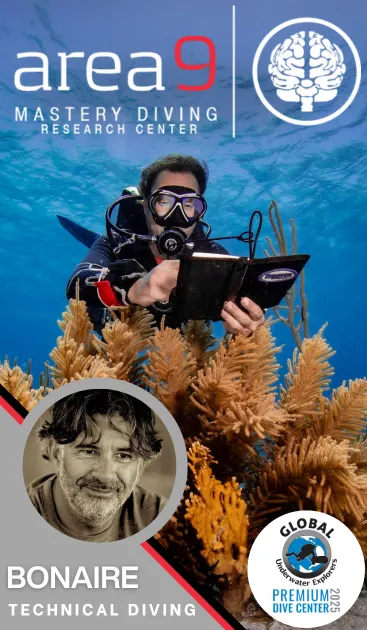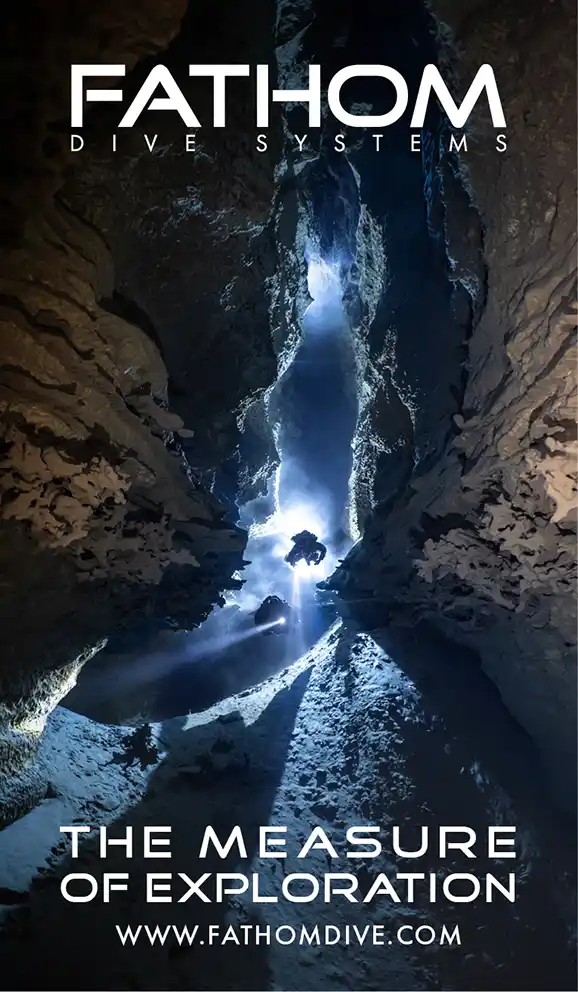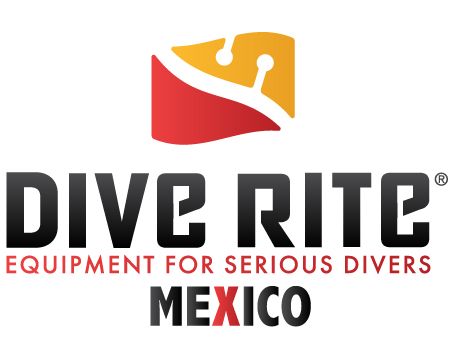Uncategorized
Apnea Evolved
These Pioneers are Shaping the Future of Tech Freediving
Interviews by Charly Stringer. Lead image courtesy of Matt Stow @freediving_africa.
? Pre-dive Clicklist: Midnight Star – No Parking On The Dance Floor ?

Technical freediving is an emerging discipline blending the simplicity of breath-hold diving with advanced gas strategies borrowed from technical scuba diving. Unlike traditional freediving, which relies solely on air and minimal equipment, technical freediving introduces the use of enriched oxygen mixes such as nitrox for pre and post-dive breathing. This can enhance performance by slowing down the effects of hypoxia, accelerate recovery, and reduce the risk of decompression sickness. [Note, helium is unsuitable for this application due to its rapid diffusiveness]. In some cases, divers even breathe oxygen underwater at depth, using specially adapted systems, this can facilitate longer, safer, and more efficient dives. While still controversial in some freediving circles, this approach is gaining traction among elite athletes, safety teams, and expeditionary freedivers.
I recently had the opportunity to speak with four pioneers in the field; Chris Bustad; a safety supervisor and educator within the Performance Freediving Int’l (PFI) organization, Eric Fattah; a maverick innovator pushing boundaries with mixed-gas breath-hold systems, Nicholas Fazah; a technical diving instructor bridging freediving and advanced scuba gas planning, and Jeroen Van Haudt; a seasoned competition medic who has managed eight World Championships and been executive medical safety officer at over 120 competitions. From this esteemed group of experts, I had the opportunity to learn more about what technical freediving really is and hear about its future for deep freediving and competitions.
Here’s what they had to say:

Chris Bustad: Innovating for Safer Freediving
Chris Bustad, formerly a Director of Training and an Instructor Trainer Evaluator for Performance Freediving International (PFI), has significantly shaped safety standards and protocols within the freediving community. His extensive experience includes managing deep freediving safety and pioneering the use of enriched air mixtures. Chris’s work focuses on integrating scientific knowledge into practical freediving safety, balancing innovation with risk management to ensure maximum protection for divers and safety teams.
Chris’s involvement with technical freediving began with practical application. He explains: “I was initially involved in testing protocols during the Deja Blue competitions, where I served as a Safety Supervisor. We experimented with high oxygen mixes for recovery after deep safety freedives, and with lower oxygen mixes for breathe-ups on safety dives to 40 meters and shallower.” This hands-on experience directly fed into formalizing the discipline, as he later contributed to writing the standards and procedures for the PFI Technical Freediving course.
Understanding Nitrox in Freediving: Risks and Rewards
When discussing the use of nitrox in freediving, Chris emphasizes a pragmatic view on safety. He states: “The risks of using nitrox in freediving are largely the same as in scuba; There’s no such thing as ‘safe’ in diving (freediving or scuba), only acceptable levels of risk.” However, he points out that with proper application and training, nitrox: “can actually reduce some of the inherent risks of freediving.”
The primary concern, according to Chris, is, “elevated partial pressures of oxygen (PO2) at depth, which can be dangerous.” Yet, he clarifies that this risk is manageable “with proper protocols, such as limiting freedive depth or switching to air for a period before freediving.” Despite these considerations, the benefits are clear: “We’ve found that even breathing enriched mixes for just a few minutes before a freedive can offer measurable benefits.” Beyond nitrox, Chris cautions against other gas mixes for pre-dive use, stating: “The risk-to-reward ratio for using other mixed gases in freediving is currently too high.”
Essential Advice for Aspiring Technical Freedivers
For freedivers considering incorporating enriched oxygen mixes into their dives, Chris offers clear and vital advice: “First and foremost is to take a course,” he emphasizes, “Don’t assume that reading an article and having access to nitrox is enough.” Beyond formal education, he urges divers to critically evaluate their motivations: “Second, ask yourself: Will using this tool reduce or increase the risk of my freedives?”
Chris highlights a common pitfall, explaining that: “It’s easy to get caught up in the novelty of new gear or techniques without critically evaluating whether they’re appropriate for your freedives.” He concludes with a strong recommendation for thoughtful application: “Technical freediving absolutely has its place but casually experimenting with it on a weekend freedive session is not necessarily the time or place.”
The Future Trajectory of Technical Freediving
Chris has observed a growing interest in technical freediving from its early development to today. “Since we first began developing the concept of technical freediving, I’ve definitely seen it gaining traction.” However, he believes it’s unlikely to become a widespread recreational practice: “Freediving is, for many, about the simplicity and minimalism that sets it apart from scuba,” he explains, adding, “While mixed gases have their place, I don’t expect to see them used routinely at the beach.”
Regarding its place in competitive freediving, Chris expresses reservations for athletes: “I don’t think, and frankly, I hope that we won’t see competitors breathing nitrox prior to their dives.” He points to current applications, “That said, we’re already seeing it used post-freedive for recovery, as a Guiness record for static, and in some competitions, safety freedivers are using it beforehand.” With the exception of the Guiness Records, in these contexts, the purpose is not about performance extension. “The purpose in those cases isn’t to extend depth or bottom time, but to help maintain endurance and serve as a bit of a reserve throughout a long day of safety freediving.”
Debunking Myths: Freedivers and DCS Risk
A persistent misconception in the freediving community is the immunity to decompression sickness. Chris directly addresses this, saying: “There’s a persistent myth that freedivers can’t get bent, but numerous studies suggest otherwise.” He affirms the benefits of post-dive oxygen breathing for managing DCS risk: “Breathing elevated oxygen post-freedive increases the pressure gradient for off-gassing, which could reduce the risk of decompression sickness especially after very deep dives or multiple repetitive shallow dives.”
However, he strongly reiterates that using compressed gas, even at shallow depths, carries inherent risks. Chris emphasizes that this practice should only be used by those that have received training.
Final Thoughts from Chris
Chris sees technical freediving as a valuable, albeit specialized, tool. He believes it has its time and place: “It can be fun, and it can reduce risk in the right context. Is it for everyone? No. But should people learn about it? Absolutely.” His rationale is straightforward: “The more you understand what’s happening physiologically during a freedive, the better equipped you are to manage risk.”
Looking to the future, Chris hints at ongoing developments within PFI: “As for the future, yeah, Kirk (Krack) and I have been discussing some new directions for technical freediving, so stay tuned.”
Technical freediving is reshaping the limits of what’s possible on a single breath, combining freediving skill with advanced gas use to improve safety and extend bottom time. Though still in its early stages and not without debate, it opens new doors for exploration, research, and performance. As the sport evolves, pioneers like Eric, Nick, Jeroen, and Chris are leading the way: blending innovation, science, and discipline to redefine breath-hold diving for the modern era.


Eric Fattah: A Pioneer of Mixed-Gas Apnea
Eric Fattah has been a profoundly influential innovator in the freediving world, though he describes himself as “disconnected from the freediving community in general, due to a variety of reasons, primarily, the generally poor attitude that has developed in the community towards the original founders.” He highlights the contributions of a select group: “Almost all of modern freediving was invented by five people, Kirk Krack, Rudi Castineyra, Herbert Nitsch, Sebastien Murat, and myself.”
Eric’s own contributions are extensive and foundational to the sport, creating the mouthfill equalization technique, setting the first depth record with the monofin, being the first to adapt triathlon wetsuits for freediving, creating the no-warm-up deep diving technique and the hypothermic diving system, pioneering Functional Residual Capacity (FRC) (half lung) dives, and pioneering the technique of no-suit diving in cold water. Eric told me that he still holds the unofficial world best for freediving without a wetsuit in arctic conditions (-80.5m 2005), that he invented fluid goggles, and he was the first to document CO2 narcosis hallucinations on constant weight dives.
Beyond these achievements, Eric also experienced and studied freediving-related decompression sickness (DCS), and pioneered: “mitigation techniques including ‘apnea deco’ (diving back down immediately after a deep dive, holding the breath at 6m/20ft), and I also created Liquivision Products Inc. which created freediving computers that performed decompression calculations (the first of their kind and still the only computer that ever did that correctly).”
He explains that his disconnection from modern freediving communities stems from many factors, including the implementation of watered-down or poorly executed versions of his techniques: “Sadly, no one gives the original creators credit for anything; instead the opposite is true, new ‘trainers’ appear every year, teaching the stuff the five of us originally developed, while at the same time these new ‘creators’ claim to be the inventors of the techniques they teach, which they teach poorly and incorrectly anyway.” continuing, Eric went on to express his frustrations around recent cheating scandals: “Furthermore, competitive freediving itself has been marred by doping, since no one remains who is creative enough to innovate better ways to go deep.”
Regarding his specific practice of technical freediving, Eric says, “Technical freediving was invented by Kirk Krack, and I’m not aware of any technical freediving community. Other than Kirk and his friends, I’m unaware of anyone—besides me—who practices it.”
A Different Kind of Dive: High-O₂ Freediving
Eric’s approach to technical freediving involves carrying a small gas bottle. He explains the setup and procedure: “I usually dive with a 6 cu ft bottle attached to my forearm, which contains anywhere from 21-46% O2, and I exhale on the surface, sink down to 10m/33ft, then flare out, stop, take a breath from the bottle (exhale/sink reduces CO2 generation during the buoyant beginning of the dive).” A key safety aspect of this system is that: “If the bottle fails or is empty, the dive is aborted and I return to the surface with no risk. Thus, unlike scuba diving, there is no possibility for equipment failure at depth because the bottle is never used in the deep phase of the dive.”
This technique offers significant advantages, particularly regarding dive duration and the psychological experience. Eric states: “Starting a high-O2 freedive with low CO2, you double or triple the dive time while also eliminating the risk of low-O2 blackout.” This approach fundamentally changes the risk profile compared to traditional freediving. He highlights a critical distinction in breathing preparation: “In common freediving, the more you hyperventilate, the greater the risk of blackout on the dive. In high-O2 freediving, the more you hyperventilate beforehand, the LESS the risk of blackout.”
There is: “no need to breathe the mix for any length of time before the dive,” Eric says. “The only thing that matters in high-O2 freediving is that you must hyperventilate long & hard before the dive (on regular air), which is contrary to common freediving.” He recommends at least: “3 minutes on the first dive, and on subsequent dives where you have accumulated a massive amount of CO2, you need to hyperventilate for 6-10 minutes between dives.”
The Hidden Threat: CO₂ Narcosis
While low oxygen is the primary concern in common freediving, Eric warns that in high-O₂ freediving: “blackout, if any, happens from high CO2.” Prior to a CO2 blackout, divers experience CO2 narcosis. Eric details the symptoms: “CO2 narcosis causes first tremors & shakes, next, a dizziness, followed by confusion, next, a feeling of impending doom as if death is imminent, and finally, hallucinations.” He notes that: “Thankfully the symptoms of high CO2 happen way in advance (unlike low O2 whose symptoms appear seconds before the blackout).” This early warning provides ample time to surface safely.
Regarding experimenting with other gas mixes, Eric explains: “You can take a breath of 21% at 6-10 m/20-33 ft on the descent. For nitrox, 40% is the most common, though I have used up to 46%.” He is comfortable using: “40% nitrox on a 50m freedive, and If diving more than 60m then I would probably use 36%.”
Diving Alone, By Design: Safety and the Community
Eric’s diving practices, including solo freediving, often go against the accepted community norms. Living in Vancouver with typically poor visibility, he and his diving friend Tyler Zetterstrom found that: “’Buddy diving’ in poor visibility (on common air) was an extremely dangerous practice.” Eric explained that divers would “push themselves, knowing they had a ‘buddy’ to save them, and people would black out, but the buddy would not see them due to the poor visibility.” This led them to conclude that “solo diving techniques were important, and people should assume they are diving solo even though they have a buddy.” He argues that with high-O₂ freediving by saying, “Low-O2 blackout risk is eliminated, CO2 symptoms come early—so you can abort the dive if needed—and most of all you have so much time down there that you can pause to avoid passing boats which is, in my opinion, the greatest danger to all freedivers.”
Eric also believes that high-O₂ systems could significantly improve safety for competition safety divers: “In competitions today safety divers often use scooters to ‘spot’ the diver ascending from a competitive dive. That is overly complicated, dangerous and worthless compared to breathing high-O2 before a safety dive.” He notes that while “Kirk saw this and his safety freedivers breathe nitrox before safety dives, this practice never caught on, the community is always highly resistant to any change.”
Breath-Hold Decompression: Apnea Deco
One of Eric’s innovations is apnea deco, a breath-hold-based approach to reduce decompression stress. He shares his personal experience and experimental approach: “My own DCS incidents and self-experimentation have shown that descending back down right after a dive (even while holding the breath), greatly reduced DCS symptoms, and I did trials on deep dive schedules using myself as the guinea pig, especially when developing the deco software for the Xeo computer, and purposely gave myself mild DCS more than 20 times as I debugged these DCS schedules.” He found that, “Going back down after a deep dive, while holding the breath, works but is less effective than using 100% O2 for the same purpose.”
Eric also helped calculate a decompression schedule for Herbert Nitsch’s 250 m/820 ft no-limits record attempt. He explains the plan: “Stop at 40 m/131 ft for 1 minute, stop at 22 m/72 ft for 2 minutes, then stop at 10 m/33 ft until he could no longer hold his breath.” Tragically, during the attempt, Herbert had a nitrogen narcosis blackout around 100 m/328 ft on the ascent, Eric explained that, “The safety team did not understand that the deco schedule must be maintained whether the diver is conscious or not, and instead they took him straight to the surface where he got severe DCS and was paralyzed for 18 months before finally making a full recovery.” Eric contrasts this with Herbert’s successful 214 m/702 ft dive where he stopped at 10m/33ft deep while still holding his breath and waited there just over a minute, and then surfaced without issues.
Final Thoughts From Eric
Eric explains his motivation for this style of diving: “Probably the biggest ‘sell’ for high-O2 freediving is that you can enjoy the underwater world much more than with common freediving because the worry about blackout is gone.” He adds: “Suddenly, the feelings in your lungs are accurate, early, and reliable and give more than ample time to take action, so you can just dive without worry, using your lungs as the metric, a practice which is extremely dangerous in common freediving. During a common freedive, recreationally, to 30-55 m/100-180 ft, you must ascend way before you feel anything in your lungs, otherwise you risk blackout.” He states that “enjoyment is the highest, by far, in high-O2 freediving.”
Despite its benefits, Eric believes widespread adoption of high-O₂ freediving is unlikely. He attributes this to several factors: “Sadly, few will discover this enjoyment, as there is no promotion or training of this technique anywhere to my knowledge.” [Ed. Note: Performance Freediving Intl (PFI) now offers training]. He noted earlier that the community “is always highly resistant to any change.” He concludes with conviction: “When using this style of diving, every dive lasts at least 4 minutes, and some dives last more than 6 minutes.”
DIVER: The Liquivision of Eric Fattah (2013) by Michael Menduno


Nick Fazah: A Technical Freediving Strategist Bridging Scuba and Breath-Hold
Nick Fazah brings a unique blend of expertise to technical freediving, a discipline he seamlessly transitioned into after years in the broader technical diving community. With a history of teaching freediving since 2010 and a background in technical scuba, including being a Normoxic Trimix Instructor on closed-circuit rebreathers (CCR) as well, Nick approaches deep freediving with a rigorous, safety-first mindset.
He describes this transition as “natural progression: respecting the risks, understanding gas dynamics, and treating deep freediving with the same discipline and planning that technical diving demands.” His involvement is deeply practical, combining decades of teaching with real-world deep dive expeditions.
Balancing Benefits and Risks of Breathing Nitrox Before Deep Freedives
When it comes to breathing Nitrox before freediving, Nick highlights both the advantages and the associated dangers. He states: “Breathing a recreational level of nitrox before a freedive can be a massive advantage if—and this is a big if—you understand the physiology behind what you’re doing.” He explains that it allows divers to “start the dive with a higher oxygen reservoir in your blood and tissues, and you lower your initial nitrogen load compared to breathing air.” This, in turn, can lead to: “a slower onset of hypoxia and, in theory, less inert gas uptake at depth, both of which can increase safety and performance if managed correctly.” The real gain, he clarifies, comes from “elevating the oxygen content dissolved directly into your plasma,” boosting overall oxygen reserves.
However, Nick also issues a strong warning about the risks: “Breathing elevated oxygen levels brings serious risks, too. The biggest is CNS oxygen toxicity.” He emphasizes the danger even for freedivers: “A gas mix that’s safe at the surface can turn dangerous at depth as your CNS exposure spikes.” He reiterates: “For us, the risk is a sudden CNS event, like a seizure, and we still don’t have hard CNS clock data for breath-hold exposures. Until we do, we need to assume that high PO₂ at depth carries real, immediate risk.”
Continuing, Nick emphasizes strict adherence to established safety principles: “This is why we manage the FO₂ of the breathing gas based on the PO₂ exposure we expect at depth, following standard Maximum Operating Depth (MOD) principles.” He specifies that when preparing, “we select recreational levels of Nitrox, typically between 32% and 40%, depending on the target depth.” Crucially, “True hyperoxic mixes, anything around 80% or higher, are reserved strictly for recovery on the surface or at shallow depths post-dive, never for the final breath before descending.” He also highlights crucial timing protocols: “You must be off the hyperoxic recovery mix for at least two minutes before you take your final breath for the next dive.”
Beyond physiological concerns, Nick points out a behavioral trap— “Breathing elevated oxygen levels can make you feel invincible.” This can lead divers to “extend dives way past their physical capabilities, or ignore proper surface intervals because they ‘feel great.'” He concludes, “The reality is, the gas isn’t what gets you back to the surface safely, your dive plan and discipline do.”
Gas Choices and Safety Fundamentals
Currently, the options of gases for technical freediving remain as just Nitrox mixes. Nick states: “Right now, the primary gas choices for technical freediving are still pretty conservative—air or recreational levels of Nitrox—typically in the 32-40% range.” He notes that, “Elevated oxygen mixes, 80% or higher, used for surface recovery are for speeding up inert gas washout and oxygen replenishment at shallow depths or at the surface, not for pre-dive breathe-ups if you’re going deep.”
For any freediver considering mixed gases, Nick stresses that, “It doesn’t eliminate risks; it changes which risks you’re managing.” Core safety considerations include PO₂ (partial pressure of oxygen) management to avoid oxygen toxicity, discipline around gas transitions and timing, prioritizing surface intervals for off-gassing, and bailout planning. He advises: “The science is still young… You have to be conservative, observant, and willing to adapt.” He summarizes: “Mixed gases don’t replace fundamentals, they layer on top of them.”
The Inevitable Evolution: The Future of Technical Freediving
Nick believes that: “Using gases other than air is already starting to creep into serious freediving training, especially at the technical and expedition level”, and that its wider adoption is “inevitable”. He foresees a clear: “two-tiered freediving world: A large recreational community that continues to operate mostly on air… A smaller, more specialized technical freediving community… who use gas strategies routinely because the dive demands justify the extra risk and complexity.” He concludes, “Mixed gas isn’t a shortcut to safer dives, it’s a responsibility.”
Regarding the possibility of seeing mixed gases in competition, Nick is skeptical for athletes themselves. He said: “In terms of athletes breathing gases before a competition dive, I don’t think we’re going to see that anytime soon, and honestly, I’m not sure we should.” This is down to: “strict rules that limit breathing gas options and the introduction of a whole new set of safety problems.” However, he fully supports the use of elevated oxygen for competition safety teams. Nick believes: “Hyperoxic recovery gases could help safety divers clear nitrogen faster, recover between dives, and stay sharper at depth,” ultimately making “competitions safer without directly altering athlete performance rules.”
On the topic of freedivers breathing oxygen at six meters post-dive for DCS risk, Nick confirms that it “can absolutely help reduce decompression stress, as high PO₂ environments accelerate the elimination of inert gases like nitrogen.” Yet, he adds a “huge asterisk,” warning that, “The way a lot of freedivers are using post-dive oxygen right now is oversimplified.” He continues, “The effectiveness depends heavily on when you start breathing the oxygen, how long you breathe it, how elevated your nitrogen load actually is, and how repetitive your dive schedule has been.”
Final Thoughts From Nick
Nick believes technical gas use represents the future for serious freediving operations. He shared: “I think the biggest thing people need to understand is that technical gas use in freediving isn’t just a gimmick or a performance hack.” He emphasizes its necessity as divers push limits: “The old ‘breathe air, surface rest, repeat’ approach just doesn’t cut it once you get into that territory.”
Continuing, Nick told me: “You still need to be a skilled freediver first… Technical gas use doesn’t replace that foundation. It just gives you better tools to stay safer and more effective once you’re operating at the limits.” Looking ahead, he predicts: “I think over the next decade, we’re going to see technical freediving split off even more clearly from recreational freediving, just like tech scuba split from recreational scuba. It’ll force better training standards, better risk management, better education around what gases can do for you, and what they can’t.” For Nick, “Technical gas use isn’t the end of freediving tradition; it’s the evolution of it.”


Jeroen Van Haudt: A Community-Driven Safety Leader, Making Technical Freediving More Accessible
As a professional medical safety officer for many years, Jeroen Van Haudt is a prominent figure in the freediving community. He recognized a gap in understanding when it comes to the advanced practice of incorporating enriched air (EANx) and pure O2 with freediving.
For Jeroen, technical freediving becomes essential when dives push beyond depths safe for normal air, often as a crucial measure for DCS prevention. His main involvement in the freediving community revolves around promoting safe freediving practices. A significant part of his work is dedicated to incident prevention, achieved through developing and teaching specialized incident management techniques tailored for freediving. This includes, but isn’t limited to, the safe application of enriched air and oxygen.
Defining the Depths: What is Technical Freediving to Jeroen?
“I didn’t know there was such a thing as a technical freediving community,” Jeroen admits, highlighting the nascent nature of this specialized area. He defines technical freediving as occurring: “when it is no longer safe to execute or end a free dive on normal air.” This involves the strategic use of enriched air (EANx) or 100% oxygen, not just as a pre-dive breath-up, but also for: “post-dive prophylactic measures to prevent DCS”. Jeroen observes that this practice is getting more and more common within the community.
The Nuances of Nitrox: Benefits and Risks
When discussing the safety of breathing Nitrox before a deep freedive, Jeroen offers a nuanced perspective. He considers: “breathing nitrox 32 before free diving to depths up to 40 m/131 ft of seawater, safe,” and acknowledges experimental dives using other EANx mixes and depths, but cautiously says, “I cannot have an opinion on what I haven’t tried myself. These practices are experimental and should not be replicated without proper safety measures in place!”
While the benefits of using EANx are clear: “the reduced percentage of nitrogen present in the body significantly reduces the risk of decompression sickness”, Jeroen is quick to highlight the associated risks: “Freediving inherently comes with a set of risks. Breathing nitrox mixes before freediving introduces several unique considerations and extra risks primarily because of the effect of oxygen on high partial pressure and how it interacts with the body during breath hold diving.”
A significant concern for Jeroen is the potential for central nervous system oxygen toxicity (CNS), noting that: “the risk of central nervous system oxygen toxicity CNS cannot be wavered. There’s always a chance of the human body reacting to higher oxygen partial pressures. Dizziness, visual disturbances, twitching or even seizures may occur; which of course would be very dangerous underwater.” He also points out that: “Decompression Illness incidents have also been reported during deep nitrox dives.”
Perhaps the “biggest risk,” in Jeroen’s opinion, is the psychological impact: “Freedivers will be more likely to reach their limits when breathing nitrox, thinking they have much more time underwater due to the elevated oxygen levels in their system. Warning signs of hypoxia are moving forward in time.” This, combined with the risk of hyperventilation during breath-up, can dangerously increase the risk of deep underwater blackouts. To mitigate these dangers, he stresses that: “Dedicated dive plans and surface intervals need to be strictly respected.” For beneficial effects, Jeroen suggests that “breathing oxygen-enriched air at normobaric conditions in a normal fashion suffices,” but he recommends a waiting period of at least 5 to 10 minutes before a descent after breathing a mixture above 32-36% oxygen.
Beyond Nitrox: Unexplored Possibilities and Critical Safety
While nitrox and oxygen are the current focus, Jeroen ponders other possibilities: “I’m not aware of anyone experimenting with blends other than nitrox and oxygen for freediving purposes.” However, he has considered Heliox (a mixture of helium and oxygen) for specific medical scenarios, such as treating severe dyspnoea in divers with lung damage from barotrauma. He clarifies that this would fall under “incident management” rather than technical freediving itself.
For any freediver contemplating mixed gases, Jeroen’s advice is unequivocal: “First, make sure you educate yourself on the practice of enriched air diving. Certain skills and knowledge will make the venture in free diving with mixed gases a lot safer.” He also emphasizes the critical importance of “operational use and maintenance of equipment” and the unwavering adherence to “strict dedicated dive plans and protocols.”
The Future of Technical Freediving: A Focus on Safety Divers
Looking ahead, Jeroen envisions a significant role for EANx in the safety freediving branch of competitive freediving. He explains: “The dive profile of a safety diver is amongst the riskiest around. AND the most tiresome too! Use of nitrox would limit risks of DCS and reduce fatigue.” He speaks from personal experience, noting how “safety diving on EANX 36 instead of air during a week of safetying during movie shoots left me way more lucid and energetic on the weekends.”
He believes it’s a shared responsibility to support these essential personnel, “It’s our responsibility to try to take care of the safeties. To provide them with the best circumstances possible to do their job.” As competitive athletes dive deeper “rethinking how these employees must execute their job safely is in order.”
However, Jeroen doesn’t foresee mixed gases being used within competition settings: “The use of oxygen will stay limited to safety free diving tables and post-free dive prophylactic use.”
Jeroen believes that: “the risk of DCS occurring is always present. Even after a post-dive 5 minute at 5 m/16 ft decompression session.” He recounts witnessing an example of this: “the 5 minutes at 5 m/16 ft precautionary measure does not suffice. When you’re honest, you can only admit that 5 minutes is not enough time to properly decompress.” While longer sessions would be ideal, he acknowledges the logistical challenges for event organizers, who often “cannot provide the amounts of oxygen.”
Final thoughts from Jeroen
In closing, Jeroen warns, “We have entered the age of technical freediving without realising it. We are free falling into technical freediving. But the conscious shift has yet to happen within the community.” He extends a compelling invitation to everyone who experiments with technical freediving in whatever form to, “Really think through the processes that they want to execute.” He believes that as freediving pushes new frontiers, a conscious and educated approach to technical aspects is paramount for safety.

Back to Technical Freediving is Reemerging as the Cutting Edge of Breath-hold Diving

Charly is a writer who’s originally from the UK but has been based in Dahab, Egypt, for the past four years. She taught scuba diving for three years in Cyprus, Thailand, and Egypt before discovering her love of freediving. She still scuba dives for fun but, these days, she’s more focused on her freediving training. When she’s not in the water, diving, she’s on her laptop, writing about diving.

